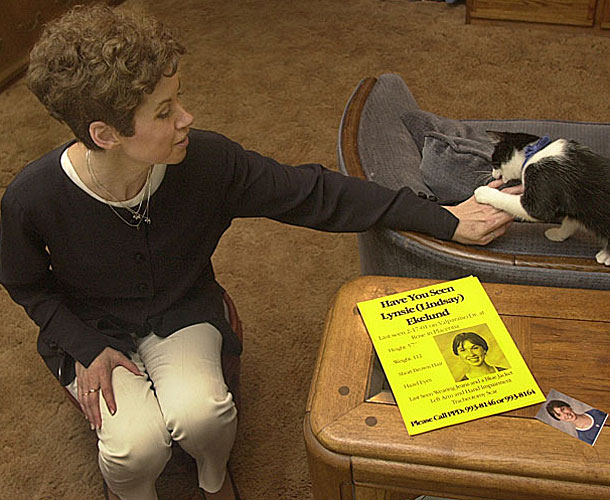The Homicide Report returns

The soft-spoken woman with a high-pitched voice ushered me into her condo, decorated with photos of her daughter.
A day earlier, she received a phone call from police. She needed to get home as soon as possible. It’s about Lynsie, they said.
Nancy Ekelund rushed back, hoping that after 10 years, her daughter, a shy college student with bright brown eyes and an innocent smile, would be waiting there for her.
Instead, police told her there had been a confession. They had uncovered human remains.
As we sat in her living room, she told me she had never given up hope that her daughter was out there, alive.
For years, she stood at the entrance to the OC Fair to hand out missing-persons fliers. Friends sometimes told her they thought they had seen Lynsie on the street or in a store, alive. Though the revelation brought closure, it also opened a new chapter of grief for Ekelund.
It was not the first murder I’d covered, but something about Ekelund’s raw pain left me wondering often about the people left behind when a loved one is killed. Whether it’s the case of 20-year-old Lynsie, last seen alive in February of 2001, or that of 55-year-old Richard Vidaurry, shot once in the head and killed by an unknown assailant last month -- their stories matter.
The Homicide Report, started in 2007 by my colleague Jill Leovy, aimed to cover each homicide in Los Angeles County for an entire year. The report endured after that year when Ruben Vives became the primary writer. But covering every homicide is no small task in a county as big as Los Angeles and the Homicide Report has had stops and starts along the way.
In 2010, after a 14-month hiatus, the original blog was turned into a comprehensive database with an interactive map. So far, the report has provided details on more than 4,500 killings since January 2007, ranging from basic details to in-depth reports.
Starting today, we’re relaunching the Homicide Report. We’ll be reporting on new homicides, highlighting cold cases, featuring detectives and telling the stories of people like Vidaurry and Lynsie Ekelund.
The map has been updated and, for the first time in six months, we’ve added entries to the blog. In the coming months, you’ll also see changes in the way the report looks and functions.
Crime is at historically low levels in Los Angeles, but people are still dying at the hand of another. In 2011, the L.A. County coroner’s office classified 640 deaths as homicides. Last year, 636 people were killed.
There are nearly 10 million people in L.A. County -- the most of any county in the U.S. -- which makes it easy to distance ourselves from our neighbors. Some of us don’t know anyone who has been murdered, and some of us know many.
This project exists for all of us, and for the victims of homicide, no matter how good or bad.
We hope you’ll reach out and share memories, photos and details about the lives who are lost – the people who deserve to be more than just a number.
Photo: Nancy Ekelund with her family cat, Oreo, who kept her company when her daughter disappeared in 2001. Ekelund printed more than 500 fliers of her missing daughter and distributed them at local restaurants, schools, restaurants and bookstores. Credit: Geraldine Wilkins, Los Angeles Times
Post a comment
Before you post, here are some answers to frequently asked questions:
Remember, all posts are approved by a Times staffer. Profanity and personal attacks will not be approved.
13 reader comments